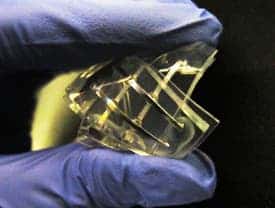Scientists from North Carolina State University have successfully managed to engineer a new kind of soft, malleable memory device that can function like a memristor, while at the same time retaining the physical properties of your plain old, delicious Jell-O.

Due to its consistancy, the device might find itself ideally suited for wet environments, where conventional electronic devices are inpracticle, opening new pathways for biocompatible electrical engineering. This would make it ideal for applications in biological environments like cells, enzymes or tissue, where the device could be used in functioning sensors, medical monitors or even bio-triggers.
“We’ve created a memory device with the physical properties of Jell-O,” says Dr. Michael Dickey, an assistant professor of chemical and biomolecular engineering at NC State and co-author of a paper describing the research.
“Our memory device is soft and pliable, and functions extremely well in wet environments – similar to the human brain,” Dickey says.
The innovative device was made by mixing a liquid alloy of gallium and indium metals set into water-based gels, similar to gels used in biological research. Like I said earlier, the squishy device works like a memristor, the electrical component of the future of which I’ve written earlier – check the reference for detailed and explicit look into how these amazing devices work. In a nutshel, a memristor is capable of being in one of two states at any given time: conductive or resistive, or the 1 and 0 in binary language. Conventional electrical devices work like this by use of electrons through a computer chip – memristors can do this using only ions.
This also means it can be programmable to act in a certain way inside the human body, everything from bio pacemakers to programmed drug therapy could be introduced. Although the current prototypes of the device have not yet been optimized to hold significant amounts of memory, it’s still an intense scientific prospect for the future – and looks like Jell-O.



